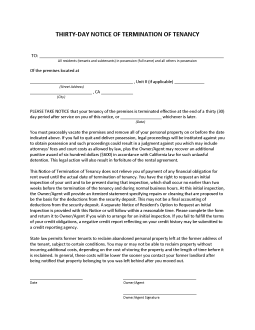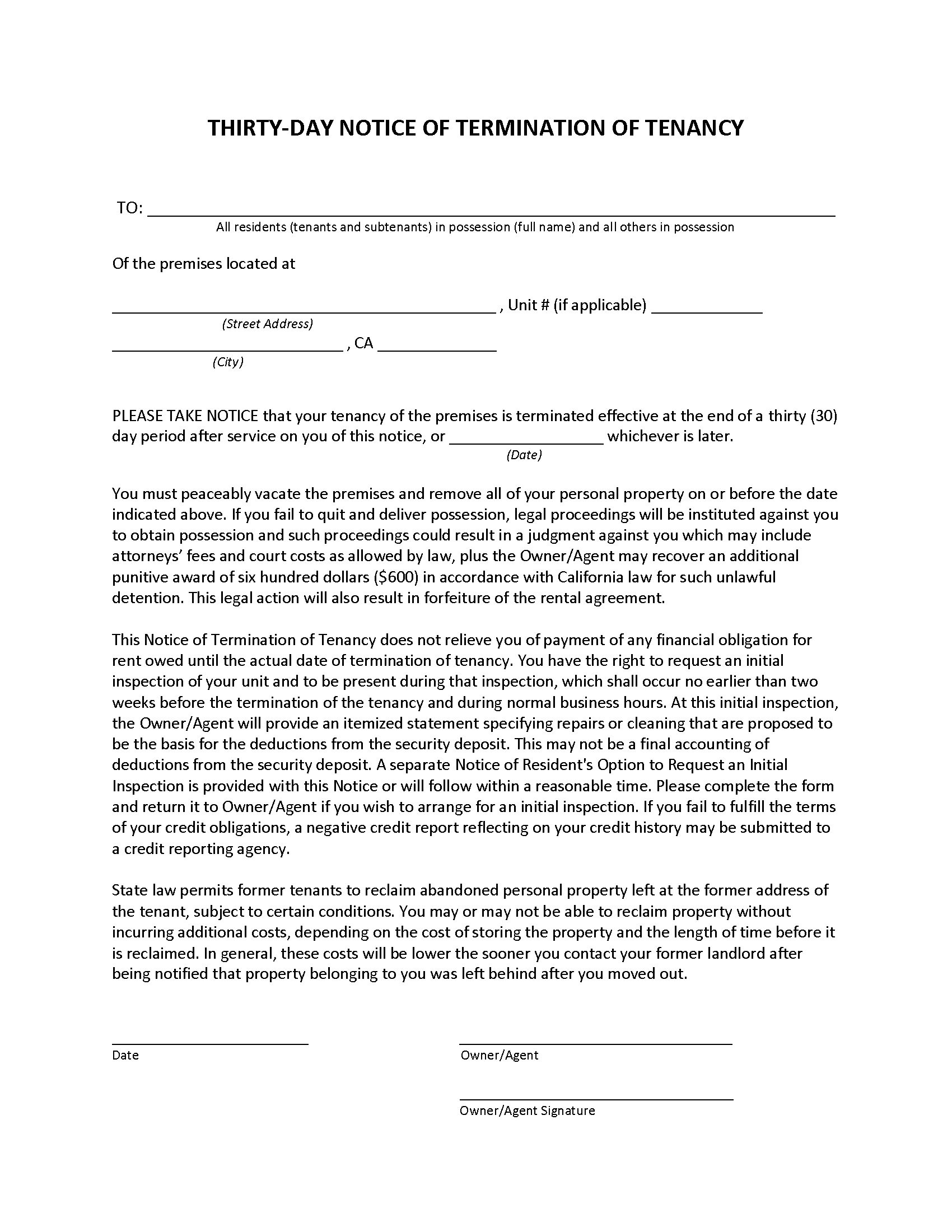Updated January 02, 2024
The California lease termination agreements are used by a landlord or tenant seeking to end a month-to-month tenancy relationship. The form must be served to the other party (recommended with Certified Mail). All month-to-month tenancies must be terminated with 30 days’ notice if the tenant was on the property for less than a year and 60 days’ notice if the tenant has rented for one (1) year or longer. For tenants renting longer than a year and in accordance with the CA Tenant Protection Act of 2019, the landlord must present just cause — either at-fault or no-fault.
Laws – Civil Code 1946
Types (3)
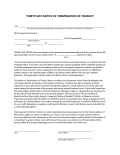 30-Day Notice – For a month-to-month tenancy that began less than one (1) year from the notice of termination.
30-Day Notice – For a month-to-month tenancy that began less than one (1) year from the notice of termination.
Download: PDF, MS Word, OpenDocument
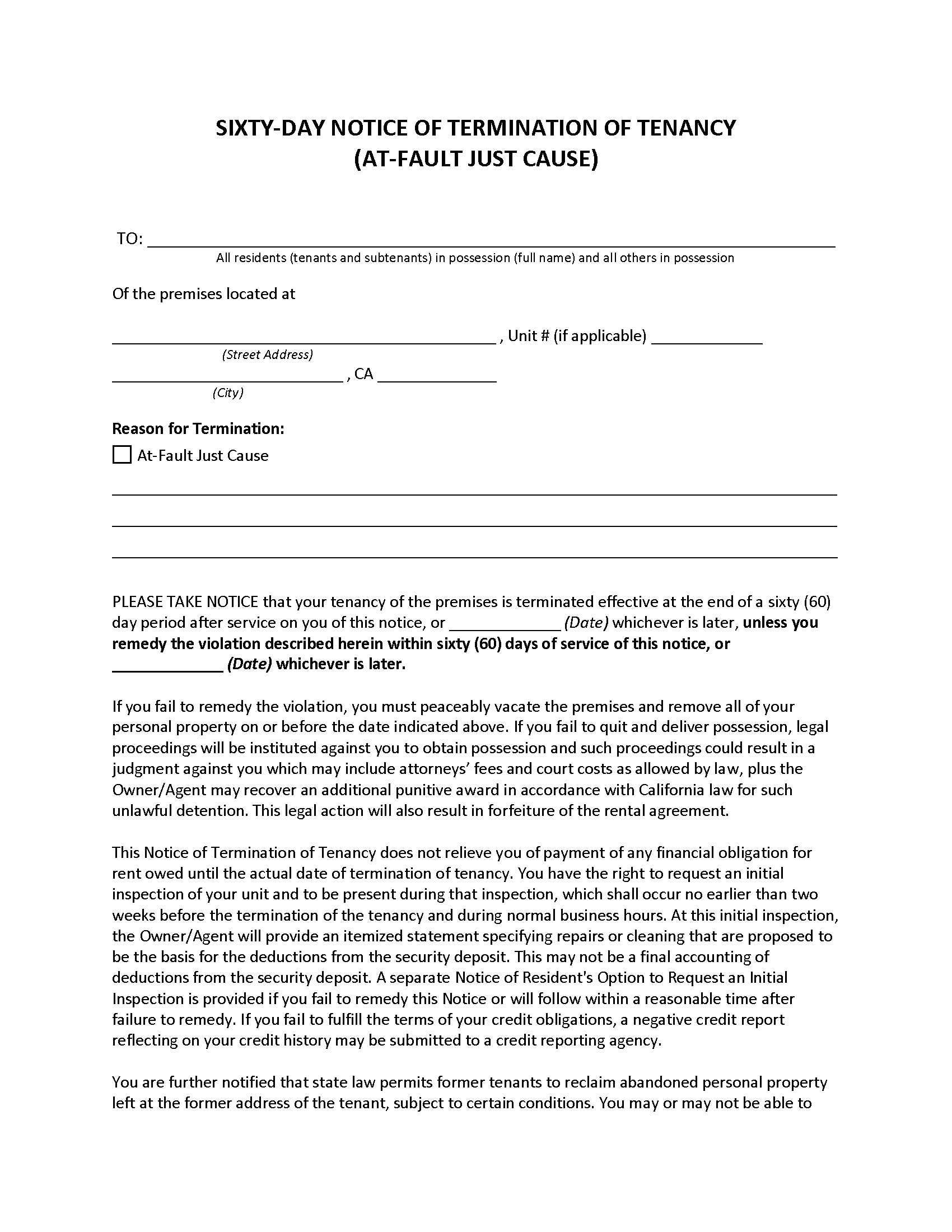 60-Day Notice (At Fault) – For a tenancy that has been one (1) year or more. Notice must be given with at-fault just cause.
60-Day Notice (At Fault) – For a tenancy that has been one (1) year or more. Notice must be given with at-fault just cause.
Download: PDF, MS Word, OpenDocument
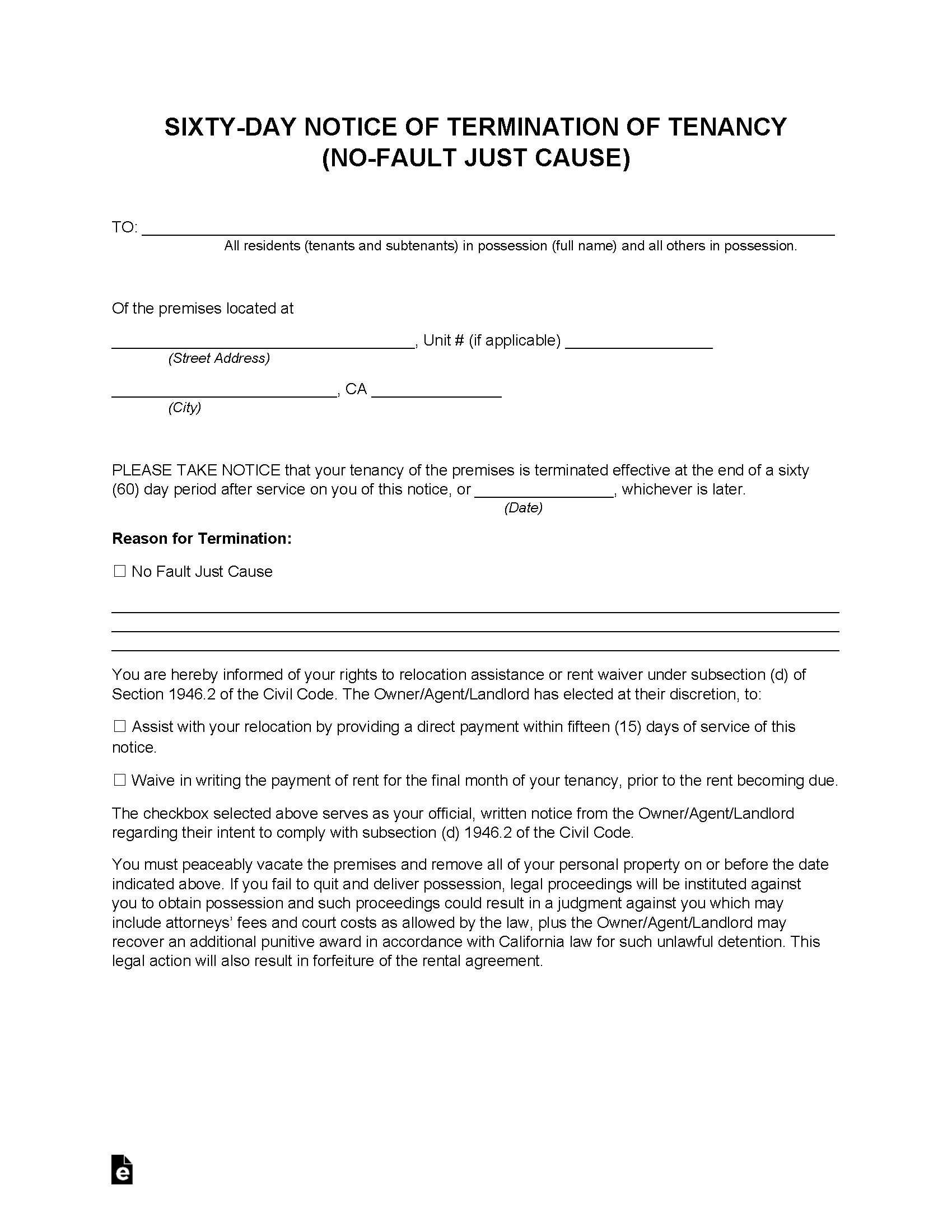 60-Day Notice (No Fault)– For a tenancy that has been one (1) year or more. Notice must be given with no-fault just cause, and the landlord is responsible for tenant assistance.
60-Day Notice (No Fault)– For a tenancy that has been one (1) year or more. Notice must be given with no-fault just cause, and the landlord is responsible for tenant assistance.
Download: PDF, MS Word, OpenDocument

